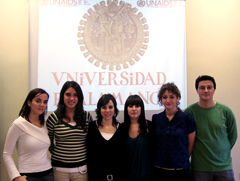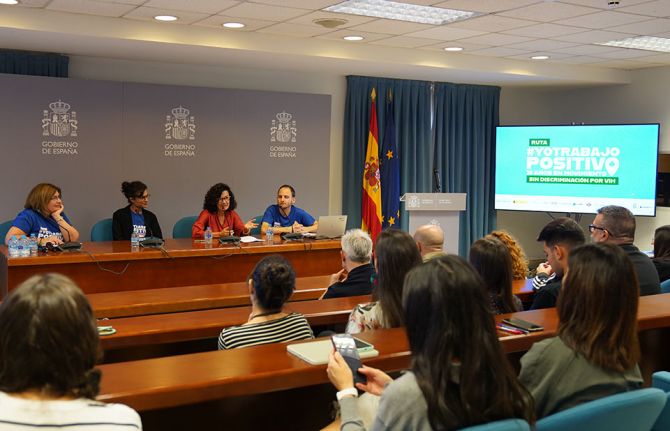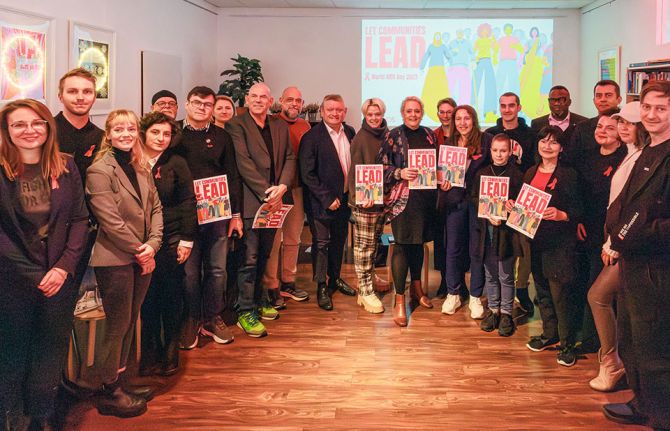unaids.org
UNAIDS


Primarily focused on translating the content of the
UNAIDS web site which will launch its multi-lingual
versions in 2008, the partnership plays a twofold role:
in addition to providing UNAIDS with high-quality
translations, it offers the University students the
unique opportunity to work on current ‘live’ documents
of the United Nations.
It has been proven that people understand and retain information better when it is written in their own language. So when it comes to reaching as many people as possible with knowledge and information about AIDS making content available in a variety of languages is imperative.
For that reason, UNAIDS translates documents, reports and other forms of content in its four official working languages—English, French, Spanish and Russian.
Further developing its multi-lingual communication and advocacy capacity, UNAIDS has partnered since 2005 with the Faculty of Translation and Documentation of the University of Salamanca, Spain, to design new ways of developing communication on AIDS in Spanish, which, used by 370 million people across the globe, is the third most spoken language worldwide.
Primarily focused on translating the content of the UNAIDS web site which will launch its multi-lingual versions in 2008, the partnership plays a twofold role: in addition to providing UNAIDS with high-quality translations, it offers the University students the unique opportunity to work on current ‘live’ documents of the United Nations and gain increased awareness on AIDS issues at the same time. In this way, the partnership plays a key advocacy role among young people— helping them understand the dynamics of the epidemic in various regions of the world and helping to reduce stigma and discrimination.
Coordinator of the partnership project and vice dean of the Faculty of Translation and Documentation of the University of Salamanca, Dr Jesús Torres del Rey, spoke to www.unaids.org about the achievements to date and the benefits of such partnership.
Q. How does the translation partnership work?

The students themselves are elected to coordinate
the whole project. Once completed, the students’
work is further revised and coordinated by the faculty
staff.
A. As part of their curriculum, students have a wide range of authentic practical translation projects (internships or “prácticas”) to choose from. For the partnership, we decided to make translation of UNAIDS web site material one of these ‘prácticas’, and it has become one of the most popular. We receive the documents in English from UNAIDS and then the students work collaboratively to translate and then revise the translations between themselves. The students themselves are elected to coordinate the whole project. Once completed, the students’ work is further revised and coordinated by the faculty staff. Parallel to the practical sessions, special 2-month seminar sessions are conducted where other UNAIDS texts are translated under a lecturer’s direct supervision. Across the project, strict deadlines and quality processes have to be observed by the students and this makes the task as similar to real life as possible. Last year our project received funding from AECI, the Spanish Agency for International Cooperation, which is part of the Ministry of Foreign Affairs. This helped us acquire some of the necessary hardware and software as well as provide other resources for our students working on this project.
Q. What are the benefits for the students and how can this contribute to the preparation for their professional translator career?
A. The benefits are many. The students work with authentic ‘real-time’ materials with a very clear purpose and use a methodology similar to that of professional environments, while learning about the work of an international organization. Not only are they getting a professional job done but they are also helping to raise awareness about UNAIDS messages and issues. The partnership is also a source of pride and prestige for the University and the students themselves.
Q. In addition to the translation work undertaken at the faculty, the partnership also involves students in a Terminology research project – how does this work and why is it important?
A. Good terminology work before and parallel to translation work is paramount, as all translators need to use specific terms, which have been validated by experts and for specific concepts and situations. For UNAIDS, this means words and terms relating to AIDS, but not only in medical terms but in a much wider social context. Words may have different meanings in specific situations so it is very important to put them in context apart from providing its definition. We also need to make sure that the ideas behind terms and meaning relations between them are clearly understandable by all the Spanish speakers worldwide.
For the terminology research project we will start studying texts and translations, extracting specific words and inserting them into the terminology software. At the same time we will create concept maps to help us manage all the information. What is crucial here is to be able to exchange information with UNAIDS language experts and other officials about concepts, usage, etc and to access actual UNAIDS documents and publications to extract the context in which these words are used.
Q. How will the UNAIDS / Salamanca University partnership continue and grow?
A. We expect to be able to build a solid platform for communication, terminology and translation exchange The main objective is to be able to make the information flow as automatic as possible to help students, UNAIDS staff and users of the information, to have access to timely and accurate information produced by UNAIDS.

Feature Story
Translating AIDS knowledge
31 October 2007
31 October 2007 31 October 2007Primarily focused on translating the content of the UNAIDS web site which will launch its multi-ling...

Primarily focused on translating the content of the
UNAIDS web site which will launch its multi-lingual
versions in 2008, the partnership plays a twofold role:
in addition to providing UNAIDS with high-quality
translations, it offers the University students the
unique opportunity to work on current ‘live’ documents
of the United Nations.
For that reason, UNAIDS translates documents, reports and other forms of content in its four official working languages—English, French, Spanish and Russian.
Further developing its multi-lingual communication and advocacy capacity, UNAIDS has partnered since 2005 with the Faculty of Translation and Documentation of the University of Salamanca, Spain, to design new ways of developing communication on AIDS in Spanish, which, used by 370 million people across the globe, is the third most spoken language worldwide.
Primarily focused on translating the content of the UNAIDS web site which will launch its multi-lingual versions in 2008, the partnership plays a twofold role: in addition to providing UNAIDS with high-quality translations, it offers the University students the unique opportunity to work on current ‘live’ documents of the United Nations and gain increased awareness on AIDS issues at the same time. In this way, the partnership plays a key advocacy role among young people— helping them understand the dynamics of the epidemic in various regions of the world and helping to reduce stigma and discrimination.
Coordinator of the partnership project and vice dean of the Faculty of Translation and Documentation of the University of Salamanca, Dr Jesús Torres del Rey, spoke to www.unaids.org about the achievements to date and the benefits of such partnership.
Q. How does the translation partnership work?

The students themselves are elected to coordinate
the whole project. Once completed, the students’
work is further revised and coordinated by the faculty
staff.
Q. What are the benefits for the students and how can this contribute to the preparation for their professional translator career?
A. The benefits are many. The students work with authentic ‘real-time’ materials with a very clear purpose and use a methodology similar to that of professional environments, while learning about the work of an international organization. Not only are they getting a professional job done but they are also helping to raise awareness about UNAIDS messages and issues. The partnership is also a source of pride and prestige for the University and the students themselves.
Q. In addition to the translation work undertaken at the faculty, the partnership also involves students in a Terminology research project – how does this work and why is it important?
A. Good terminology work before and parallel to translation work is paramount, as all translators need to use specific terms, which have been validated by experts and for specific concepts and situations. For UNAIDS, this means words and terms relating to AIDS, but not only in medical terms but in a much wider social context. Words may have different meanings in specific situations so it is very important to put them in context apart from providing its definition. We also need to make sure that the ideas behind terms and meaning relations between them are clearly understandable by all the Spanish speakers worldwide.
For the terminology research project we will start studying texts and translations, extracting specific words and inserting them into the terminology software. At the same time we will create concept maps to help us manage all the information. What is crucial here is to be able to exchange information with UNAIDS language experts and other officials about concepts, usage, etc and to access actual UNAIDS documents and publications to extract the context in which these words are used.
Q. How will the UNAIDS / Salamanca University partnership continue and grow?
A. We expect to be able to build a solid platform for communication, terminology and translation exchange The main objective is to be able to make the information flow as automatic as possible to help students, UNAIDS staff and users of the information, to have access to timely and accurate information produced by UNAIDS.



